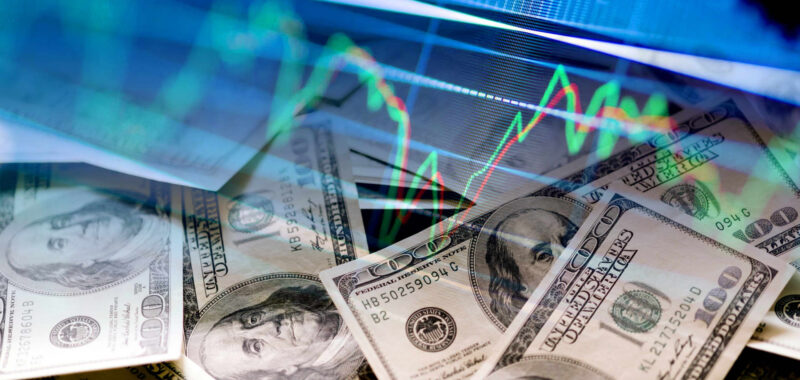Despite an anticipated Federal Reserve rate cut coming next week, Americans are continuing their love affair with cash. Yet, experts warn they should make some moves if they want to lock in attractive yields. Assets in money market funds hit $6.3 trillion the week ended Wednesday, another record high, according to the Investment Company Institute . The funds have attracted inflows thanks to their attractive payouts. The annualized 7-day yield on the Crane 100 list of the 100 largest taxable money funds is currently 5.08%. Bank of America is predicting those inflows will continue, even after the Federal Reserve starts cutting rates . The central bank is slated to meet Sept. 17-18, and more than 70% of traders anticipate a quarter percentage point reduction in the federal funds rate, according to the CME Group’s FedWatch Tool . The remaining traders believe it will be a 50 basis point. “Fed rate cuts are unlikely to unlock MMF cash unless rates < 2%. Fed cuts should see MMF inflows slow but outflows unlikely unless cuts much deeper vs market expectations,” Bank of America strategist Mark Cabana wrote in a note last week. History shows that when investors do move out of money market funds, they move into fixed income over equities, he said. Institutional investors will also continue to move into money market funds as the Fed cuts rates, because any cash they have in direct money market investments, like Treasury bills, will be hit by rate cuts quicker than money market funds, explained Peter Crane, founder of Crane Data, a firm that tracks the industry. “Money fund yields follow the Fed, so they should drop by 25 basis points in the month following any Fed move,” said Crane, using the assumption that the central bank will decrease by 25 basis points. Making a move Experts have been warning investors not to hold too much cash . Instead, understand how much you may need for an emergency, as well as any money you want liquid for future opportunities or purchases, said Ted Jenkin, a certified financial planner and founder of oXYGen Financial. In that case, you can leave money in liquid assets like money markets or high-yield savings accounts. For cash that can be locked up a little longer, consider certificates of deposits â but act sooner rather than later, he said. “If you want to maximize return on your cash for the next 12 months, it is probably best to lock in 9-month or 12-month CD rates,” said Jenkin, a member of the CNBC Financial Advisor Council . “They are at the height of where they are going to be as the Fed is going to lower interest rates over the next 12 months.” CD rates have already been coming down, with American Express and Bread Financial both cutting their 12-month rates last week, according to BTIG. The firm believes banks are pushing customers towards saving accounts, which have rates that are not locked in. Still, the payouts remain attractive. Bread Financial remains on top of the list with a 4.9% annual percentage yield. Once you have the appropriate cash needs set aside, consider moving any excess funds into fixed income, Jenkin said. “It is a great time to increase the duration of your bonds,” Jenkin said. He’s extending out to five and 10 years, and likes investment-grade corporate bonds. So does UBS’ Leslie Falconio, who calls the 4½-year to 5-year part of the curve the “sweet spot.” “We have had a record amount of issues in investment-grade corporate the first week of the month, but the investor demand is still there,” she said. The assets are seeing a lot of inflows and investors are able to grab a good yield with a high-quality asset, added Falconio, head of taxable fixed-income strategy in UBS Americas’ chief investment office. She also likes agency mortgage-backed securities , which is a high-quality, liquid sector. The products are debt obligations issued by agencies whose cash flows are tied to the interest and payment on a pool of mortgage loans, such as Fannie Mae, Freddie Mac and Ginnie Mae. They are considered low credit risk because they are backed by the U.S. government. “It is not as though we think there is going to be an issue in terms of defaults or issues with high yield, we just think they are too tight,” Falconio said. Another place for investors to look is preferred stocks , which tend to do very well when interest rates decline, according to Jenkin. The securities are a hybrid product â they trade on exchanges like stocks, but have par values and pay income like bonds. “This is the forgotten asset class,” he said. “It’s a good time to own them because they are going to continue to pay a consistent yield and will also see price appreciation.”

